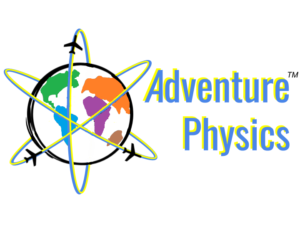Earth Science Chapters
The Magnificent Blue Marble
Chapter 1. Atoms, Elements & Minerals
The building block of the Universe is the atom. In this chapter, the structure and properties of atoms, elements and minerals are explored. The characteristics and analysis of elements are considered, and the methods of mineral identification and formation by elements are described.
Chapter 2. Rocks
Rocks hold the geologic key to Earth’s history. We examine the three classes of rocks: igneous, sedimentary and metamorphic, together with the methods of rock formation, rock structure and composition, and the Rock Cycle.
Chapter 3. Earth’s Freshwater Supply
Running water is responsible for shaping Earth’s landscape more than every other environmental agent combined. We investigate numerous such landscapes around the world. A non-renewable natural resource, the planet’s freshwater supply is quickly running out. In this chapter we look at the sources of freshwater, methods of water pollution, and the hydrologic cycle.
Chapter 4. Plate Tectonics
Natural disasters and other geologic changes to our planet’s topography can be traced to the same source, and are the growing pains of a still-forming Earth. The consequences of a changing planet have their origins in the drifting motion of the Earth’s crust. Earth’s geologic story begins with the Theory of Continental Drift and later described in Plate Tectonics. Earth’s internal structure is investigated for the source of the driving energy behind plate tectonics and presented with numerous examples of the consequences of plate movement, including Earthquakes, Volcanoes & Mountains.
Chapter 5. Earthquakes, Mountains & Geologic Features
The origins and nature of earthquakes, mountain building and several geologic features are studied in this chapter. Seismic waves and fault boundaries are examined around the world.
Chapter 6. Volcanoes
In this lecture, the different classes of volcanoes are described: Shield, Cinder Cone & Stratovolcanoes. We explain the difference between magma and lava, and the reasons why the nature of volcanic eruptions are determined by the viscosity of the magma. Several examples of active volcanoes around the world, including Mt. St. Helens, Mauna Loa, Kilauea and Mt. Vesuvius are studied.
Chapter 7. Fossils, Radioactivity & Geologic Time Scale
Earth’s fossil record is used to explain the Geologic Time Scale. Milestones in the planet’s history are investigated using the fossil record. The birth or modern geology, types of radioactivity, and the principles of relative dating are discussed.
Chapter 8. The Oceans
The last undiscovered frontier on Earth are the oceans. It is the vast body of salt water that covers almost three quarters of the planet’s surface. We know more about the surface of the Moon than we know about the ocean floor here on Earth. Complete darkness, freezing temperatures and crushing pressures are the formidable factors that make deep ocean exploration an extremely challenging task. The properties of salinity and temperature are investigated for different oceans around the world, including a look at the diversity of marine life and Coral Reefs. Early ocean voyages of explorers including the Vikings, Columbus and Magellan are described.
Chapter 9. The Atmosphere & Global Warming
Our planet’s last line of defense from the extremely harsh environment of space is our atmosphere. Accumulated over billions of years from outgassing volcanoes, gases have collected into a thin band enveloping the Earth. The layered structure of the atmosphere is described, including the properties and functions of each layer. The composition of the air is detailed, and natural phenomena such as rainbows, sunsets and the northern lights are explained.









